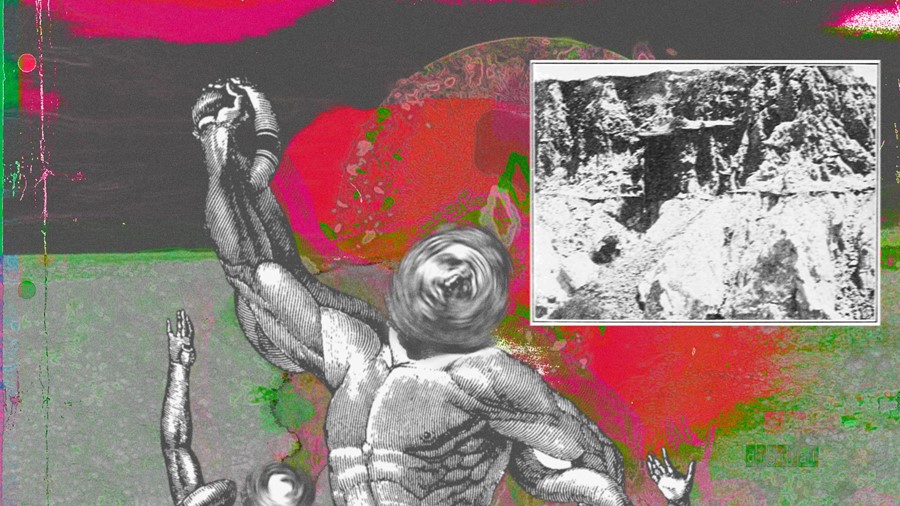Psychedelics are known as tools for self-discovery and spiritual awakening, but they’re not for everyone. We asked experts how to embark on intense trips as safely as possible
While psychedelics are mostly used recreationally in the west, these drugs are well known for their ability to bring about spiritual awakenings. Whether it’s enlightenment you seek, or maybe a clearer understanding of an issue you’ve been dealing with, psychedelics like DMT and psilocybin are often seen as a fast track to self-knowledge and spiritual wisdom. There’s a good reason for this: studies have shown a connection between regular DMT use (of which breakthroughs have been likened to near-death experiences) and belief in a higher power, and LSD and magic mushrooms are known to treat depression and anxiety.
These days, you can do this on your bedroom floor or, depending on what you’re looking for, as part of a guided ceremony with a shaman or spiritual healer present to help you through the rough patches (depending on your willingness to travel) – either way, you want to be as safe as possible. To make sure of that, we asked Kim Ruwa, a spiritual guide who works with psilocybin and Ivan Esquerra-Romano, a harm reduction expert from Drugs and Me, to share some advice.
WHERE CAN I GET THEM?
If you’re planning a spiritual trip at home it’s likely you’re going to take magic mushrooms or DMT (a molecule found in Ayahuasca with a much shorter duration, often referred to as ‘the God molecule’).
Getting hold of psychedelics can be trickier than other street drugs like cocaine, so it’s important to act with caution. If you haven’t picked your own shrooms, you can use the Dark Web for DMT and mushrooms, just make sure to check reviews which provide some accountability to sellers. It’s always important to get your drugs from a trusted source, so if you have a reliable dealer, go with them first.
HOW DO I TAKE THEM?
When it comes to taking magic mushrooms and LSD, the methods are fairly self-explanatory. For the latter, you’re probably going to ingest a tab orally and with the former, you can eat them in their dried form or brew them into a tea. They both take between 30 minutes and a couple of hours to kick in, so get comfy and simply wait.
DMT is a little trickier. There are a few ways to consume it and the safest, and perhaps most common way, is to smoke it. You can do this by getting Changa – a herbal mix that contains DMT – and smoking it with a glass pipe. Again, make sure to try a lower dose first before attempting a higher dose. You usually need to take three to five big puffs to feel the drug. You can also use DMT vapes to up your dose even more slowly. “The better the method at controlling the dose, the more chances you have to find a dose that works for you,” says Esquerra-Romano. You’ll feel the effects within seconds.
HOW TO DOSE
Larger doses are correlated with more intense spiritual experiences and positive benefits. You’re looking at three to five grams of mushrooms, 150mg or more of LSD and 35mg of Vaped DMT or 50mg+ if you’re using a pipe. (Changa usually contains 50 per cent DMT, so you’d need 100mg of Changa for 50mg of DMT – but make sure to check with your source). Remember you should always start low and go slow. It’s much safer to incrementally increase your dose, says Esquerra-Romano, which can give you more control over the experience. This is especially important if you’re purchasing drugs illegally, as it’s impossible to know the purity.

YOU’LL NEED A TRIP SITTER
Ruwa believes that it’s important for first-timers to be in a space with someone who knows what they’re doing. “A lot of stuff might come up that’s unexpected,” she says. “So having somebody there to help you relax, and to help you to feel and be safe can be very beneficial.”
However, issues with legality and, of course, pricing, might be off-putting. Or maybe you don’t think tripping with a total stranger would be right for you. If you decide to trip without a professional, Ruwa stresses the importance of having another person – even just a friend you trust – present. For this kind of experience, it's important to communicate to your sitter what you’ll need from them in advance and how they should respond to certain situations (like if you begin to cry, for example).
Ezquerra-Romano agrees, adding that for people smoking DMT, a trip sitter is vital because of how quickly the drug kicks in – meaning you need someone who can make sure you don’t drop a burning pipe onto the floor as you break through.
SETTING IS EVERYTHING
Ruwa’s number one piece of advice – as well as never mixing substances (yes, that includes weed) – is to make sure you’re in a safe environment, preferably inside without too many people present. “For me, it doesn’t feel right to be surrounded by cars or bikes or lots of different noises and different energies,” she says. “The space is so important to help the chances of having a smooth journey.”
If you’re leaving your home, make sure you bring comfy clothes, blankets and anything that can help you to feel both grounded and comforted. If you’re at home, make sure to turn your space into a “sanctuary,” as Ruwa puts it. “Let in some fresh air, make sure you have a lot of pillows and blankets and that the space is clean – this is important both energetically and practically, as you don’t want to have to step over things on your way to the toilet.”

HOW TO PREPARE: LONG TERM
First things first: do your research. Whether that’s reading about other people’s experiences, learning about traditions or finding out whether certain medications (like antidepressants) don’t mix well with your psychedelic of choice.
In the weeks leading up to the trip (it helps to think long-term), Ruwa suggests beginning to connect with your inner self through mindfulness activities like meditation, yoga, walking and journaling so that you can trip with a clearer headspace. “You can begin to ask yourself what you are noticing in your daily life that may need attention… or that you would like to take with you on your journey,” she says. It’s also important to steer clear of other drugs and alcohol in this period.
HOW TO PREPARE: SHORT TERM
In the days leading up to the trip, eat a healthy, nutritious diet. “The cleaner your body, mind and soul are, the deeper you can go,” says Ruwa. Ezquerra-Romano suggests carb-loading, like a marathon runner, beforehand as your glycogen levels become quite depleted during a trip and you’ll need the extra energy. Ruwa also suggests taking a few days of holiday prior to the trip so that you can do all of those things away from work or any other responsibilities.
If you’re taking mushrooms or LSD, you should eat lightly the day before the trip and, on the day of, stop eating three hours before – and make sure you’re well hydrated before and throughout. Prepare some nutritious meals and snacks to have during the trip, too. Seriously, the last thing you want to do while tripping is navigate a kitchen; future you will be very grateful for that punnet of strawberries.
Finally: set an intention. It’s good to go into these experiences with a rough plan, even if that plan is simply just to see what comes up for you and surrender to the experience. If you don’t set an intention, you might not get what you need from the trip.

WHAT IF YOU’RE HAVING A BAD TIME?
One of the main dangers with psychedelic trips is the prospect of having a bad trip – especially on higher doses, when time can be distorted and you may fear you’ll never come back from the trip. “Trip sitters should be neutral and just remind you that you’re in a psychedelic experience and that it will be over at some point,” says Ezquerra-Romano. This is especially important with DMT, as time dilates extremely (“some people report living multiple lives in a few minutes,” he adds) and it can feel neverending.
Ruwa also suggests doing breathing exercises if you’re lucid enough to take control, eat sugary and salty foods (vitamin C is often purported to help bring you down) and let your guide or sitter know you’re struggling.
AFTERCARE
Intense psychedelic experiences can be a big undertaking, and it’s normal to feel tired and overwhelmed afterwards. That’s why it's a good idea to make sure you have some buffer time post-trip, even if it’s just a day. “[You need to] give yourself time and space to really come back… so that you can smoothly flow back into ‘normal life’.”
The integration process, i.e. the period where you integrate what you learned into your life, can’t be overlooked – and it’s important to go about it holistically. Ruwa recommends continuing with your nutritious diet as long as you can and, as before, having a mindfulness practice and spending time in nature.
“Journaling, again, is really helpful so that you can take a note of the things right after [the trip] but also in the days and weeks after,” says Ruwa. “Sometimes we see things that just don't make sense for us at that moment, but we might come back to them weeks, if not months later.” She also suggests sharing your experience with trusted friends, your guide, or even your therapist, if you have one, which can help you to make sense of things.
At the end of the day, the experience would be pointless if you went back on to autopilot the minute it ended. Make a conscious effort to put things you’ve learned into practice, whether that’s decluttering your space, cutting out meat, acting as part of the ecosystem, reaching out to old friends or estranged loved ones or simply living a more mindful life.
Join Dazed Club and be part of our world! You get exclusive access to events, parties, festivals and our editors, as well as a free subscription to Dazed for a year. Join for £5/month today.
